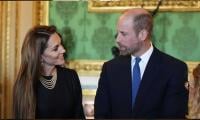BRI: The road to progress - Part I
China and Pakistan’s iron-clad friendship and strategic partnership through thick and thin needs no introduction. In 1951, the two nations officially started diplomatic interactions. Over the subsequent 70 plus years, China and Pakistan have developed an unbreakable alliance, thanks to the dedication of successive leaders and the unwavering support of the people in both nations.
We have monuments that speak for the bond the two nations have created. Construction workers from China and Pakistan carved a highway of friendship out of the snow-covered plateau with such intrepid determination. While building the road, several Chinese workers lost their lives – at least 88 – and now rest at the Gilgit Chinese Memorial Graveyard, protecting the highway they worked so hard to build.
A true friend is someone on whom people can count. Pakistan says its friendship with China is “sweeter than honey, deeper than the sea, and taller than the mountain”. For China, Pakistan is a “good friend, good neighbour, good partner, and good brother.”
From ‘friends in need’ to ‘friends of common growth’, the two countries have always understood and supported each other throughout the last seven decades, demonstrating excellent state-to-state relations. “We are not afraid of the deep sea or the fire because we believe in the sun and the future,” Quaid-e-Azam Muhammad Ali Jinnah once declared. We are confident that the future of China-Pakistan relations is bright, and that both countries will continue to progress and thrive.
The idea of a trade corridor connecting the two countries dates back well before China’s Belt and Road Initiative. The project was originally revealed in the summer of 2013 when then-prime minister Nawaz Sharif met former Chinese prime minister Li Keqiang in Beijing. The goal was to build highways, railroads, and pipelines to link China to the Pakistani port of Gwadar. Plans for implementing the projects had a five-year time frame, and the amounts involved (between $10 and $20 billion) were modest in light of China’s current aspirations in Pakistan.
Since the BRI can trace its roots all the way back to provincial-level initiatives, it mixes bottom-up and top-down methods for policy formation and implementation. For this reason, the geopolitical aspect of this process is merely incidental. Second, participating nations mostly decide which projects get funded, showing that China does not impose its will on the table.
The groundwork for CPEC was set in the 1990s, but authorities in China and Pakistan have been working towards the creation of a multimodal economic corridor between the Karakoram highway and Pakistan’s deep-water ports in the Arabian Sea for decades. The current decade saw the implementation of a double-opening plan by Xinjiang’s government, which aimed to increase the province’s ties with both China and its Eurasian neighbours. These connections, in their view, would boost economic growth in the province.
It is worth mentioning that opening the region to broader economic flows raised security worries for China. However, increasing the local economic activity was seen as the best strategy for addressing this issue. As a result, Beijing spent much of the 1990s pressuring Islamabad to enhance border security, after which bilateral trade expanded and deepened gradually. Beijing was heavily impacted by Xinjiang’s development and security strategy, which included important Eurasian neighbours.
Critical mass was reached in the early 2000s, when Beijing combined various provincial policies, including Xinjiang’s double-opening, into the national Great Western Development (GWD) policy. Central officials shared the opinion of their provincial counterparts that the GWD approach might generate economic development and hence support social stability in China's undeveloped interior and frontier regions.
At this time, Pakistan rose to prominence as a result of China’s investments in enhancing the Karakoram highway and the Gwadar port. The outcome was deeper economic ties, which laid the groundwork for CPEC. As a result of Xinjiang’s provincial government’s efforts to strengthen ties across the border, the central government was able to become more involved in the construction of CPEC. The infrastructure and local knowledge built up over the past few decades ensured that the economic corridor would play a significant role in the BRI.
The BRI can be understood as an amalgamation of provincial projects from the 1990s aimed at establishing economic corridors. These provinces continue to have a say in the development of these corridors, exemplifying a blend of bottom-up and top-down approaches to policymaking.
Officials in Pakistan see building an economic corridor with China as a way to help their country move beyond its current state of poverty. They share the Chinese perspective that development may help stabilize society. Given the protracted nature of unrest in Balochistan, this is a particularly astute observation on the part of Pakistani officials, who see parallels between their country and Xinjiang and hold out hope that a corridor will improve economic conditions in the region and reduce social tensions. In this context, the governments of Pakistan have repeatedly tried to woo and direct Chinese investment in the nation.
The Musharraf administration (2001-2008) was the first to recognize Gwadar port’s potential worth to Beijing and China’s involvement in updating Pakistan’s infrastructure in vital areas such as railways, tourism, telecommunications, petroleum, and mining. Pakistani leaders realized they might affect investment choices to dampen domestic tensions. The Sharif administration (2013-2017) emphasized the importance of energy projects to China.
Fifteen energy projects were prioritized to alleviate the energy crisis that was harming the economy and people of Pakistan. A new issue emerged, however, as Pakistan’s energy capacity grew – energy overproduction with 13,000 MW of extra power sitting idle. Hence, transferring and allocating this surplus capacity became the new obstacle. Thus, the Khan administration (2018-2022) advocated for investment in infrastructure to fill the void.
Officials in Pakistan envision CPEC being finished in three phases, the third of which would take place around the year 2030. This plan has three distinct phases: the immediate (2015-2020), intermediate (2021-2025), and distant (beyond 2025). In the first phase, infrastructure like roads, rails, logistical hubs, ports, and warehouses had to be built. Rules, regulations, legislation, and standardization policies are the primary concerns of the second phase. Before ratifying customs rules and regulations and finally moving Pakistan into the corridor staging (third stage) for foreign direct investment across industries, Pakistani officials seek to establish the courses as a transit hub.
The end goal is straightforward: provide landlocked nations with access to mass transit on a regional scale, with China as the hub and a series of bilateral agreements serving as the building blocks. China is preparing its western region by creating the necessary infrastructure to export goods to global markets, and the quickest and most convenient route is through Pakistan.
For instance, Tajikistan, Kyrgyzstan, Uzbekistan, Turkmenistan, and Kazakhstan are all part of a developing commercial bloc that will provide Pakistan with a transit market. Afghanistan’s inclusion in CPEC is a topic of discussion at the highest levels right now and is necessary for this to happen.
To be continued...
The writer is a freelance contributor and can be reached at: Waseem.sialcsu@gmail.com
-
 Adam Sandler Jokes About Aging As He Accepts Career Honour
Adam Sandler Jokes About Aging As He Accepts Career Honour -
 Royal Stalker Cases Increase Following Harry, Meghan's Marriage: Report
Royal Stalker Cases Increase Following Harry, Meghan's Marriage: Report -
 Sarah Ferguson Eyes Princess Diana’s Private Letters In Bid To Secure Future
Sarah Ferguson Eyes Princess Diana’s Private Letters In Bid To Secure Future -
 Andrew Plots Secret Sales Of Royal Jewels Amid Royal Lodge Eviction
Andrew Plots Secret Sales Of Royal Jewels Amid Royal Lodge Eviction -
 Prince William Always Ready To Step Up: ‘He’s Barely Able To Contain His Fury When Kate’s Involved’
Prince William Always Ready To Step Up: ‘He’s Barely Able To Contain His Fury When Kate’s Involved’ -
 Florida Woman ‘tricked Innocent Movers Into Helping Her’ $7k Burglary: Report
Florida Woman ‘tricked Innocent Movers Into Helping Her’ $7k Burglary: Report -
 Harry Deserves Top Protection As King Charles’ Son, Prince William’s Brother
Harry Deserves Top Protection As King Charles’ Son, Prince William’s Brother -
 Meghan Markle Receives Key Advice As Experts Warn She’s Doing Too Much
Meghan Markle Receives Key Advice As Experts Warn She’s Doing Too Much -
 Kelly Clarkson Weighs In On Life Without The Father Of Her Children
Kelly Clarkson Weighs In On Life Without The Father Of Her Children -
 Paul Mescal, Gracie Abrams Committed To 'long Distance' Relationship: Source
Paul Mescal, Gracie Abrams Committed To 'long Distance' Relationship: Source -
 Street Fight Turns Bloody As Innocent Bystander Shot In The Face
Street Fight Turns Bloody As Innocent Bystander Shot In The Face -
 Tom Blyth Shares His Two Cents On The Importance Of Rom Coms
Tom Blyth Shares His Two Cents On The Importance Of Rom Coms -
 Jennifer Lawrence Opens Up About Her Most Demanding Film Role
Jennifer Lawrence Opens Up About Her Most Demanding Film Role -
 Nikki Glaser Shares Set Of Rules For Roasting Stars At 'Golden Globes'
Nikki Glaser Shares Set Of Rules For Roasting Stars At 'Golden Globes' -
 Daily Fish Oil Supplements Intake May Reduce Cardiovascular Risks, Heart Problems
Daily Fish Oil Supplements Intake May Reduce Cardiovascular Risks, Heart Problems -
 Prince Harry Risks Overshadowing Invictus Games With Royal Drama
Prince Harry Risks Overshadowing Invictus Games With Royal Drama



